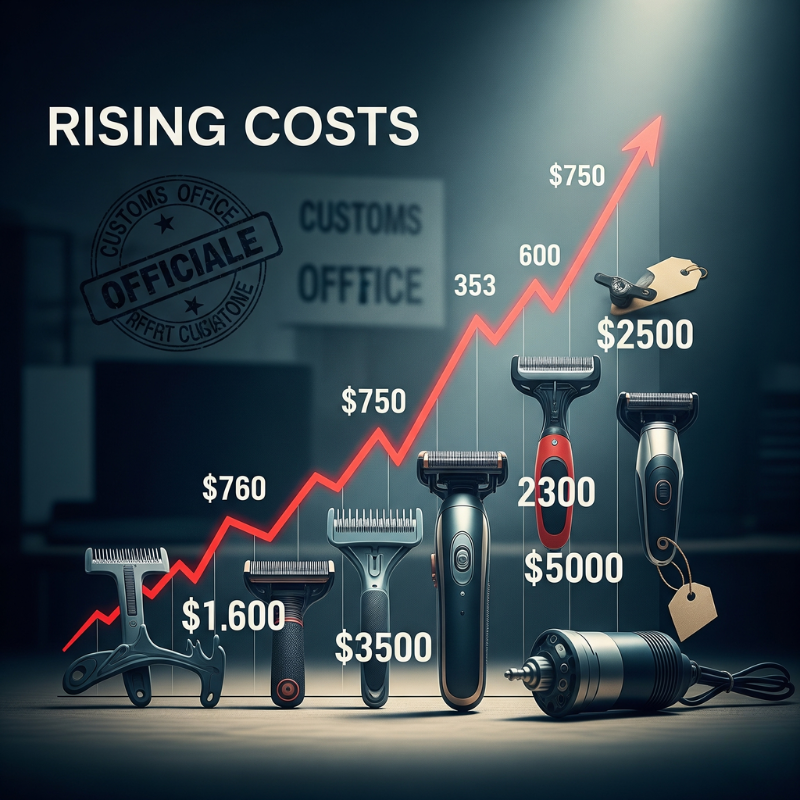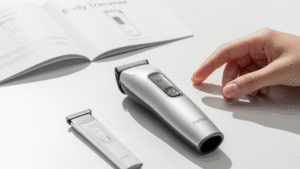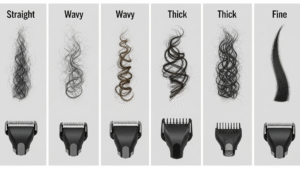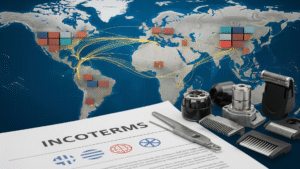Since ancient times, tariffs have been an important tool for nations to regulate their economies and protect domestic industries. In today’s increasingly globalized world, tariffs, as a form of trade barrier, have implications that extend far beyond merely increasing import costs. They profoundly shape the structure of international trade and the operational models of industrial supply chains.
For body groomer manufacturers, particularly those reliant on global procurement for their component supply chains, the imposition of tariffs on body groomer components not only directly impacts rising production costs but also influences long-term business strategies and market competitiveness. This article will delve into the multifaceted impacts of tariffs on the procurement of body trimmer components and explore how companies can effectively navigate the complex and ever-changing international trade environment.

How Tariffs Directly and Indirectly Increase Procurement Costs – Tariffs on Body Trimmers
As a direct import tax, tariffs have a clear impact on the procurement costs of body trimmer components. Taking common components such as motors, batteries, blades, or plastic casings as examples, if the importing country imposes tariffs ranging from 5% to 25% on these products, manufacturers‘ direct procurement costs will increase accordingly.
Furthermore, tariffs may also lead to an increase in indirect costs. For example, suppliers may raise the original prices of components to cope with tariff pressures or pass on part of the tariff costs to buyers. Additionally, due to the existence of tariffs, suppliers that were previously more cost-effective may no longer be attractive, forcing manufacturers to spend extra resources on finding and evaluating new suppliers, which also incurs additional operational and time costs.

The Profound Disruption and Strategic Adjustments to the Body Trimmer Global Supply Chain Caused by Tariffs
The impact of tariffs on body trimmer components extends far beyond cost increases, potentially causing profound disruptions to the global supply chain for body trimmers. To avoid high tariffs, manufacturers may be forced to redesign their supply chain networks. This may involve relocating production facilities from high-tariff countries to low-tariff or tariff-free countries, or establishing multiple production facilities in different regions to diversify risks. However, relocating supply chains is no easy task, requiring significant time and financial investment for market research, identifying suitable partners, establishing new production lines, and adjusting quality control systems. Additionally, new supply chains may initially face issues such as low efficiency and unstable quality, which are strategic challenges manufacturers must carefully weigh when addressing tariffs.
The Complex Impact of Tariffs on Consumer Purchasing Power and Market Competition for Body Trimmers
The ultimate bearers of tariffs on body trimmer components are often consumers. Manufacturers facing rising costs may pass on part or all of the tariff costs to consumers by increasing retail prices. This directly weakens consumer purchasing power, especially in markets where body trimmers are not essential goods. Additionally, changes in tariff policies can have complex effects on the market competition landscape. Large multinational companies may have stronger bargaining power and more flexible supply chain arrangements, enabling them to better absorb or mitigate the impact of tariffs, while small and medium-sized manufacturers may face greater survival pressures. Furthermore, tariff differences between different countries and regions may also lead to a redistribution of market share.

Diversified Strategies for Addressing the Pressure of Tariffs on Body Trimmer Components
Facing the multiple challenges posed by tariffs on body trimmer components, manufacturers need to adopt diversified strategies. In addition to actively negotiating with existing suppliers to seek more favorable prices or share tariff costs, manufacturers can also actively explore new supplier channels, particularly in countries or regions with lower tariffs or those that have free trade agreements with their home countries. Internally, companies should also strengthen R&D innovation, reduce reliance on high-tariff components through optimized product design and alternative materials, and actively monitor and utilize potential government tariff exemptions or subsidy policies. Additionally, collaborating with industry associations to collectively address tariff risks is another important strategic option.
The Future Trends of Tariffs on Body Trimmer Components Against the Backdrop of Rising Global Trade Protectionism
In recent years, the rise of global trade protectionism, coupled with escalating unilateralism and trade frictions, has created an uncertain international trade environment. When formulating procurement strategies, body trimmer manufacturers must not only focus on current tariff policies but also closely monitor the future direction of global trade policies. The outbreak of trade wars, the signing of new trade agreements, and changes in geopolitical risks could all significantly impact the tariff levels on body trimmer components. Therefore, establishing an agile supply chain system capable of swiftly adapting to policy changes, conducting risk warnings, and performing stress tests is crucial for companies to remain competitive in the future.
Conclusion – Building Resilience in Body Trimmer Component Procurement Amid Uncertain Tariff Environments
In summary, the imposition of tariffs on body trimmer components has had profound and complex implications for the procurement activities of body trimmer manufacturers. In the face of an ever-changing international trade environment and uncertain tariff prospects, body trimmer manufacturers must prioritize tariff risks strategically, adopt proactive measures, and build a more resilient and flexible global supply chain. This not only involves optimizing current procurement strategies but also focusing on long-term development through technological innovation, diversification, and risk management to maintain competitive advantages and achieve sustainable growth in the challenging international market.





